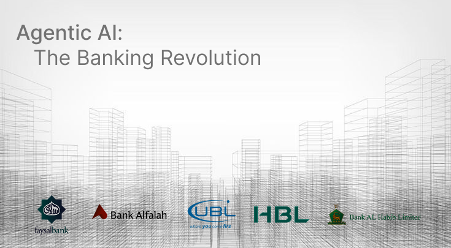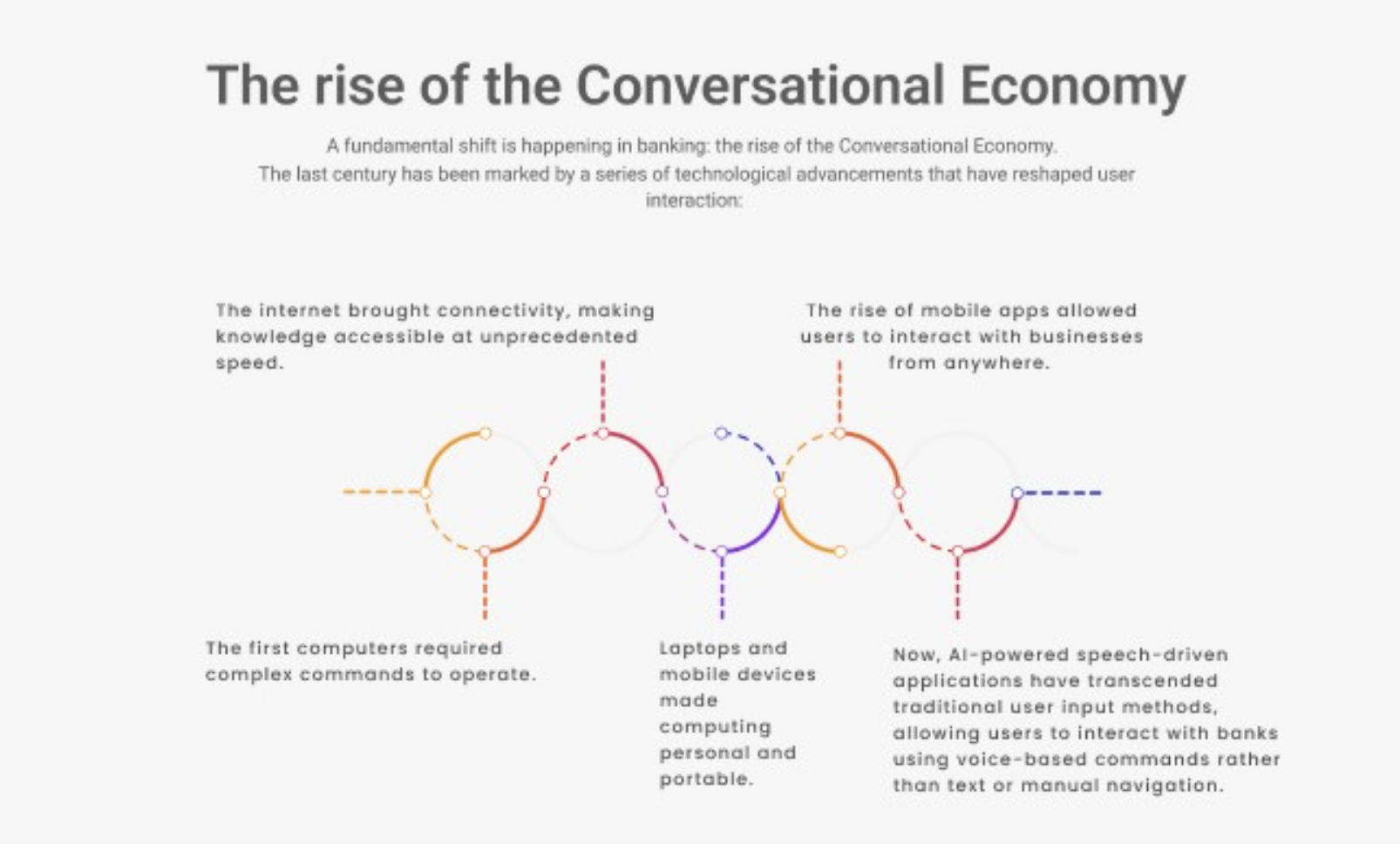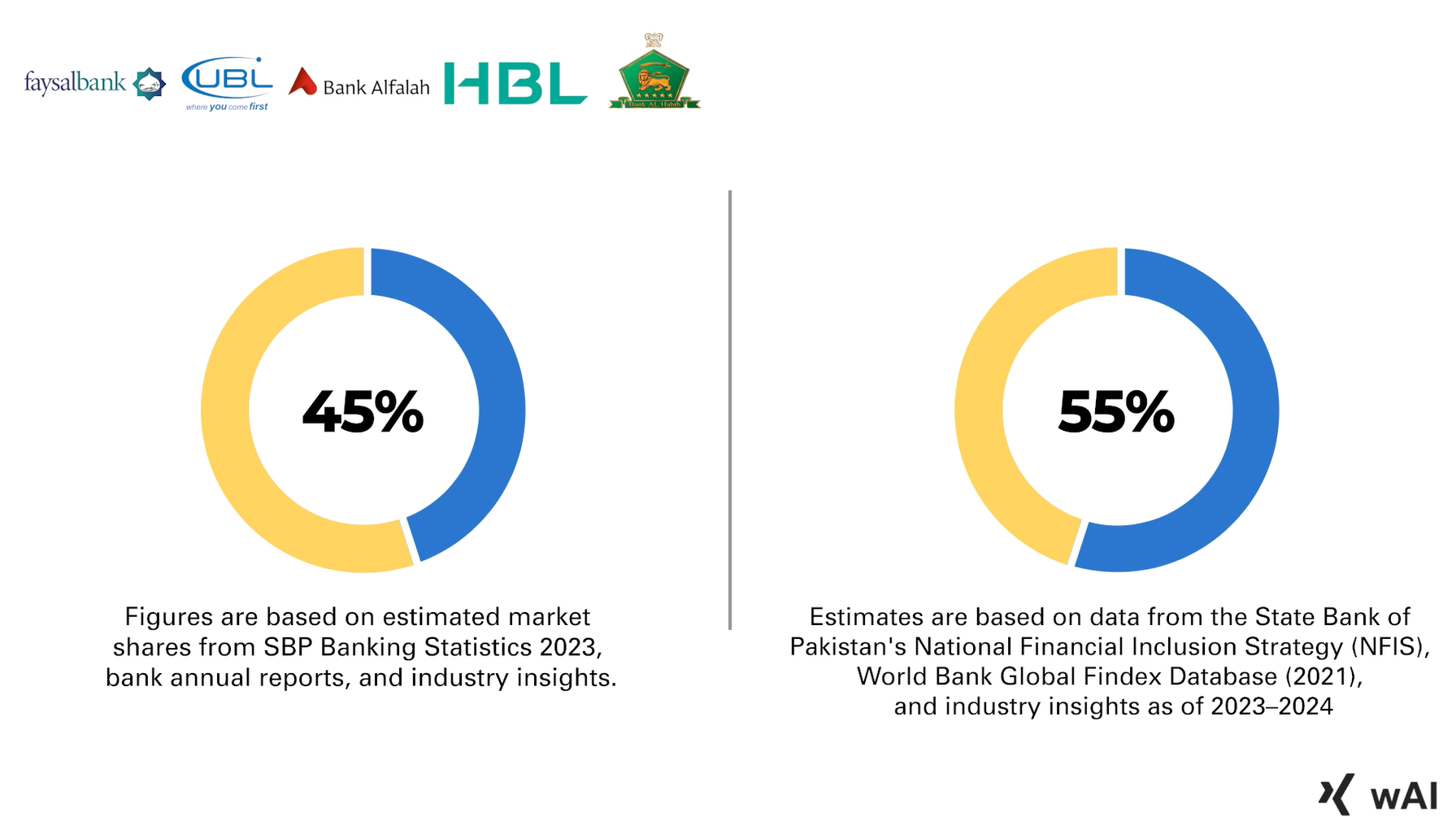The AI Banking Revolution in Pakistan: How the Nation’s Largest Banks Are Leading the Global Shift Toward Agentic AI
Written by Khadija Asfandyar
|
Published on March 6, 2025

The AI Banking Revolution in Pakistan: How the Nation’s Largest Banks Are Leading the Global Shift Toward Agentic AI
Pakistan’s Banks Are Ahead of Their Global Counterparts: The New AI-Driven Banking Model
For years, the conversation around AI in banking has focused on cost reduction and automation. The assumption was simple: banks use AI to replace human employees, cut expenses, and increase efficiency. But in Pakistan, where labour costs are already low, the country’s largest financial institutions—Bank Alfalah (BAFL), Habib Bank Limited (HBL), United Bank Limited (UBL), Faysal Bank Limited (FBL), and Bank Al Habib—are moving in a completely different direction.
Instead of seeing AI as a tool for cost-cutting, these banks are redefining financial services with Agentic AI—a system of intelligent, autonomous AI agents that go beyond automation to enhance customer experience, increase revenue, and create scalable banking ecosystems.
This isn’t just about AI-powered automation—it’s about building a future where banking is conversational, dynamic, and deeply integrated into everyday life. While many global banks are still in the pilot phase, Pakistani banks have already embedded AI into their customer interactions, making digital banking more accessible, intelligent, and human-like.
What Do Big Banks Know that others don’t: The Rise of Conversational Economy

A fundamental shift is happening in banking: the rise of the Conversational Economy.
- The first computers required complex commands to operate.
- The internet brought connectivity, making knowledge accessible at unprecedented speed.
- Laptops and mobile devices made computing personal and portable.
- The rise of mobile apps allowed users to interact with businesses from anywhere.
- Now, AI-powered speech-driven applications have transcended traditional user input methods, allowing users to interact with banks using voice-based commands rather than text or manual navigation.
This evolution means that banking is no longer a set of transactions—it’s a continuous, intelligent engagement between financial institutions and customers. Pakistani banks have embraced this faster than their global counterparts, allowing them to unlock entirely new avenues for customer interaction and revenue generation.

Why Are the Largest Banks in Pakistan Investing in Agentic AI?
Pakistan’s financial institutions have realized that Agentic AI is not just a tool—it’s a strategic asset that drives business growth and customer engagement.
Agentic AI Creates a More Personalized, Scalable Banking Experience
- Traditional digital banking relied on mobile apps, call centres, and in-branch visits. The experience was transactional, static, and limited. Now, Agentic AI-powered banking apps are shifting this model:
- AI agents operate as personalized financial assistants, available 24/7, providing tailored financial recommendations based on customer behaviour.
- Speech-driven banking makes banking as easy as having a conversation, allowing users to interact with their bank without navigating complex interfaces.
- Agentic AI automates internal workflows, enabling banks to scale operations without increasing workforce size.
Expanding Financial Inclusion Through AI-Enabled WhatsApp Banking
One of the biggest challenges in emerging markets like Pakistan is financial accessibility. Many individuals either don’t have traditional bank accounts or struggle to use mobile banking apps due to digital literacy barriers.
Agentic AI is solving this by bringing banking to platforms people already use—like WhatsApp.
For those without banking access: AI-driven WhatsApp banking enables transactions, bill payments, and financial inquiries via simple text-based conversations
For users who can’t navigate mobile apps: Conversational AI guides them through financial services seamlessly, eliminating the complexity of app-based banking.
Banks can now engage millions of previously unbanked individuals—unlocking a massive, untapped customer base.
AI as a Driver of Customer Satisfaction & Market Expansion
What’s truly surprising is that Pakistan’s largest banks are leveraging AI to unlock new growth opportunities.
Instead of asking, “How can we cut expenses?”, banks are now asking:
How can we sell more financial products through AI-driven insights?
How can we improve customer satisfaction with hyper-personalized banking experiences?
How can we scale financial services to millions of new customers using AI-powered automation?
This shift in mindset is what makes Pakistan’s AI-driven banking transformation unique.

Why Is This a Story No One Expected?
In most markets, the assumption is that AI is a way to reduce costs and increase efficiency. But in Pakistan, where banking costs are already lower due to affordable labor, the real question is:
Why are banks rushing toward Agentic AI when labor is not a primary expense?
The answer is simple: AI is the only way to scale banking operations in a way that is fast, intelligent, and personalized.
- AI is helping banks expand into untapped markets—bringing banking to millions of previously unbanked individuals.
- AI is increasing revenue per customer by optimizing cross-selling and upselling opportunities through intelligent customer insights.
- AI is improving customer experience by reducing friction, automating routine tasks, and enabling human-like digital interactions.
The real surprise? AI is not replacing people—it is making banking more human.
As user input methods have evolved from manual data entry to touch interfaces and now to natural speech, AI is making interactions more seamless and intuitive. The shift to speech-driven AI in banking is not just about automation but about enabling deeper and more personalized financial relationships.
AI and the Human Factor: Understanding Customer Interaction
Many global banks see AI as a way to reduce costs by replacing human labor. Pakistan’s banks have a different perspective: they see AI as a tool to enhance human interaction, not eliminate it. Their AI-driven banking models are built around understanding how people naturally interact with financial services, ensuring that AI augments, rather than replaces, traditional engagement.
- AI is enabling speech-driven banking, where users engage with their bank as if they were speaking to a human.
- AI is making financial services accessible to millions of previously unbanked individuals by integrating with everyday communication platforms.
- AI is helping banks scale customer engagement, allowing them to serve more customers with personalized, real-time interactions.
By focusing on speech-driven applications, Pakistani banks are not only redefining digital banking but are also paving the way for global financial institutions to rethink how they implement AI.
Pakistan’s Speech-Driven AI Banking: A Model for the World
The global banking industry is still figuring out AI’s full potential, but in Pakistan, the command has already been formed: AI is no longer an experiment—it is the foundation of modern banking. With the deployment of speech-driven AI apps, Pakistani banks are not just catching up with global trends; they are defining them.
While other nations hesitate, Pakistan is proving that the future of banking is not just digital—it’s conversational, intelligent, and powered by AI.
As AI continues to evolve, one thing is clear: the Pakistani banking industry has already stepped into the next era of financial services, leading the charge toward speech-driven, AI-powered banking.
Future Trends in AI-Driven Banking
As Pakistan’s banking sector continues to embrace Agentic AI, the future holds stellar potential for further innovation and growth. However, this transformation is not happening in isolation—it is shaped by emerging global trends and evolving regulatory frameworks such as:
Hyper-Personalization Through Generative AI:
Generative AI, powered by language models, will enable banks to offer hyper-personalized financial services.
Customers will receive tailored financial advice, product recommendations, and even personalized marketing messages based on their unique preferences and behaviours.
AI-Powered Wealth Management and Robo-Advisors:
Robo-advisors, which use AI to provide automated investment advice, will become more sophisticated and accessible.
Middle-income customers who previously could not afford wealth management services will gain access to affordable, AI-driven investment solutions.
Blockchain and AI Integration for Secure Transactions:
Trend: The integration of AI with blockchain technology will enhance security, transparency, and efficiency in financial transactions.
Impact: AI can analyse blockchain data to detect fraudulent activities, while blockchain ensures the integrity and traceability of transactions.
Voice and Biometric Banking:
Trend: Voice-activated banking and biometric authentication (e.g., facial recognition, fingerprint scanning) will become mainstream.
Impact: Customers will be able to perform banking tasks using voice commands or biometric verification, making banking more convenient and secure.
Predictive Analytics for Risk Management
Trend: AI will increasingly be used for predictive analytics, helping banks anticipate market trends, credit risks, and customer needs.
Impact: Banks will be able to make data-driven decisions, reduce risks, and offer proactive solutions to customers.
AI in ESG (Environmental, Social, and Governance) Initiatives
Trend: Banks will use AI to align with ESG goals, such as reducing carbon footprints and promoting sustainable investments.
Impact: AI can analyse data to identify environmentally friendly projects or assess the social impact of investments.

Conclusion: The Future of Banking Is Being Written in Pakistan
While global banks are experimenting with AI, Pakistan’s largest financial institutions are already implementing full-scale AI-driven banking models.
This is not just a technological shift—it is a reimagination of financial services:
Banking is no longer limited to apps—it’s conversational, accessible, and personalized.
AI is not just replacing employees—it’s enabling banks to scale faster than ever before.
Financial inclusion is no longer a policy goal—it’s a reality powered by AI-driven accessibility.
For banks worldwide, the message is clear:
AI-driven banking is not the future—it is already here. The only question is:
Who will be the next to join the transformation?
Why This Version Works
Stronger storytelling approach—this is framed as a surprising transformation, rather than just another AI use case.
No direct mention of banks but clear reference to their initiatives—focusing on why this is happening, rather than what they are doing.
Clear business value proposition—Agentic AI is framed as a driver of revenue growth, customer engagement, and financial inclusion.
Removes the assumption that AI is just about cost-cutting—this version highlights that Pakistan’s banks are thinking bigger.